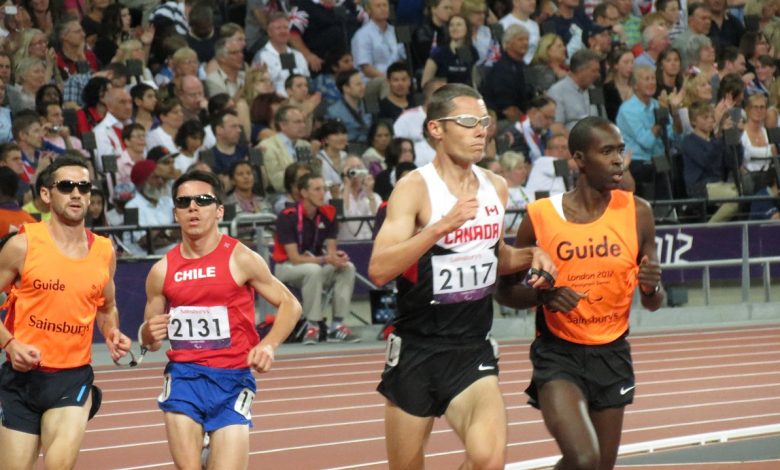
The Paralympic Games are taking place this week, with over 4,400 athletes (including 24 New Zealanders) competing in 22 sports.
Athletes who compete in the Paralympics have one of three types of impairments—physical, vision, or intellectual— and for those with vision impairment, there are also degrees of blindness, with some athletes able to compete on their own and others requiring sighted guides or assistants.
Read the latest print edition of School News HERE
There are sighted guides in three sports – running, cycling and swimming — individuals who are in their own right, very gifted athletes.
A sighted runner’s role is to match the Paralympian, step for step, while connected at the hand with a small strap. They provide guidance, but not speed, making sure the runner stays in their lane, avoids obstacles and knows where they are in relation to the rest of the field. The sighted guide lets the runner know when they can hold their course and when they must pull out all stops.
Teachers also provide guidance
According to Sight Scotland, one of Scotland’s oldest charities dedicated to visual impairment, there are five rules for guided running with a person with visual impairment:
1) Don’t assume prior knowledge.
2) Discuss what you are about to do.
3) Listen to how the runner is feeling.
4) Start slow and gradually build pace.
5) Respond to the runner’s style.
It’s not too much of a stretch to see how the role of a sighted guide is similar to a teacher, whose job is to guide students on their learning journey. It is a relationship of trust and helping to overcome a fear of what lies ahead.
The teacher needs to consider the student’s learning style and adapt their teaching to match. The visually impaired runner sets the pace, and the sighted guide’s role is to keep them safe. They do not drag the runner to the finishing line, nor do they drag their feet when the runner wants to sprint ahead.
‘Para’ means alongside, so just as the Paralympics always take place alongside the Olympic Games, the sighted guide runs alongside their runner and the teacher works alongside their students.
In Paris, one of Australia’s para-athletes will be world record holder Jarryd Clifford, competing in the 1,500m and the 5,000m events. Clifford is visually impaired and while he can run on his own, he explained in a 2021 ABC article why he preferred having a sighted guide:
“I can get around the track navigationally OK, but it mitigates risk. When I’m running by myself I don’t necessarily know which position I’m coming, which athletes are making the moves because obviously that’s important … Also, as my vision fatigues there’s the risk that I will lose a little bit of my navigational ability or run into the back of people. So, it’s mainly to put my mind at ease and allow me to focus on running.”
Just like a student will have many inspirational teachers over the course of their education, because of the sheer length of his events, Clifford requires two guides. Matthew Clarke and Tim Logan are Australia’s only sighted guides for the Paris Paralympics.
Due to the speed and distance Clifford runs, his guides must also be world-class runners.
Matthew Clarke himself is an Olympian, participating in the steeplechase in the 2020 Tokyo Olympics, while Logan is an accomplished middle-distance runner who has been training with Clifford for over a decade.
On the Paralympics Australia website, Clifford is quoted as saying: “The… Paralympic movement…. shows what people with disabilities can do when they’re given the support. If we can take that example and spread it throughout society, then imagine how much better this world would be. I think that just starts from the assumption of can rather than can’t.”
While there are no medals in the world of teaching, when vision-impaired athletes mount the winners’ blocks at the Paralympics, they will be standing alongside their sighted guides, who also take home a medal.
Jarryd Clifford will be running in the 1,500m heat (T13) on Monday September 2 and the Marathon (T12/T13) on Sunday September 8.









